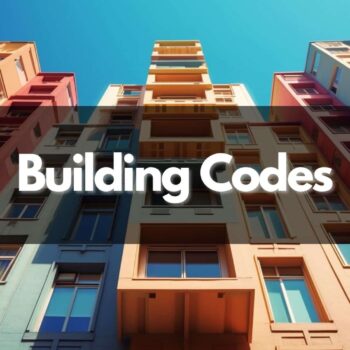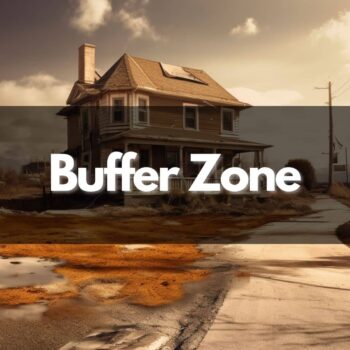A notice of default is a legal notice that indicates that the borrower has failed to make mortgage payments, and the lender can carry out a foreclosure. The lender files this notice in court if the borrower is behind on their mortgage payments.
For real estate students, it is important to understand the definition of notice of default. I’m a real estate teacher and have been helping students for many years. Most real estate students don’t understand what happens when the borrower defaults on the mortgage. If you’re confused, I’ve got you covered!
In this post, I’ll explain, in detail, the definition of notice of default, along with examples. Without further ado, let’s learn what a notice of default in real estate is.
What Is a Notice of Default?
A notice of default is a public notice that a lender files with the court when the borrower misses payments on their mortgage. The notice indicates that the borrower is in default, and the lender can continue with the foreclosure proceedings. A notice of default is the second step in foreclosure after the borrower has missed mortgage payments.
The main purpose of the notice of default is to notify the borrower that the lender can take action against the missed payments. The notice includes the lender and the borrower’s details and the default type. The details of the lender and the borrower include their names, address, and property address.
After the notice of default, if the borrower pays the due amount on the mortgage within 14 days, the lender will stop the foreclosure process. However, if the borrower doesn’t clear the payments, a default is registered, and the lender will continue to the next step of foreclosure.
Contents of a Notice of Default
The foreclosure process starts when the lender files a notice of default in the county recorder’s office to get their money back. The notice of default is recorded with the help of a trustee. It includes the following details:
- The name and address of the borrower
- The name and address of the lender
- The name and address of the trustee
- A legal description of the default
- Address of the mortgaged property
- Terms of the mortgage agreement that weren’t fulfilled
- The remedy required to cure the default
- Actions the lender can take if the default isn’t removed
- The grace period during which the borrower has to respond
- The due date by which the borrower should remove the default
- A statement that if the default isn’t cured by the due date, the lender can sell the mortgaged property
If the borrower responds to the notice of default and works towards paying the remaining mortgage, the trustee stops the foreclosure process. However, if the borrower doesn’t make the payment by the deadline in the notice of default, the trustee files a notice of sale on the property.
How Does a Notice of Default Work?
A notice of default is a strict action that the lender takes. When the borrower receives this notice, it doesn’t mean the lender will foreclose the property. This notice serves as a warning to the borrower so that the borrower prepares to cover the missed payments.
Before the lender takes a default action, if the borrower has crossed the delinquency range on a mortgage payment, delinquency is the number of days allowed for missed payments. For instance, some lenders will allow up to 30 days of delinquency, while others will allow up to 180 days. If the borrower crosses the delinquent mortgage payments, the lender files a notice of default.
A notice of default affects the borrower’s credit score. The credit score goes down because the payments are reported to the major credit bureaus. So, if the borrower doesn’t make payments on time, it affects the borrower’s credit history. The lender can use the notice of default in nonjudicial foreclosure too. In a nonjudicial foreclosure, the lender implements an out-of-court process to sell the property.
Notice of Default Example
Sally purchases a property worth $220,000. She pays down $20,000 and takes a mortgage of $200,000 from a bank. The following is a breakdown of the mortgage:
- Mortgage amount: $200,000
- Term: 30 years
- Interest rate: 4.75
- Monthly payments: $955
After making mortgage payments regularly for 15 years, Sally still owes $122,674.36 to the bank. This was when Sally missed her first mortgage payment and is 30 days overdue in making two payments.
After three missed payments, the bank files for a notice of default with the help of a trustee. The notice of default has the following details:
- The amount of mortgage due on a particular date
- The names of the borrower, lender, and the trustee
- The grace period given
- The deadline for paying the remaining balance
- Warning of foreclosure
The notice of default states that a failure to comply will result in the bank pursuing further legal action. After receiving the notice of default, Sally gathers money and pays it to the lender before the deadline. The trustee stops the foreclosure proceedings, and Sally continues to live in the home.
Frequently Asked Questions
What Does a Notice of Default Include?
A notice of default includes the details of the borrower, lender, the amount of mortgage, the mortgaged property, and the due date for making the missed payments.
What Happens When Defaulting on Mortgage?
A default on a mortgage occurs when the borrower misses their mortgage payments. A mortgage default occurs when the lender files for a notice of default. A default can affect the borrower’s credit score and make it difficult for the borrower to get other loans.
What Is the Difference Between Notice of Default and Foreclosure?
A notice of default is different from a foreclosure; instead, it serves as a notice to give a warning to the borrower before foreclosure. However, foreclosure can occur if the borrower doesn’t respond to the notice of default by making payments. A notice of default is not a foreclosure; it just notifies and warns the borrower of foreclosure.
How Do You Treat a Default Notice?
A default notice can be treated by paying the amount due on the mortgage. This is the amount that has accumulated due to missed payments. The amount may include late charges, overdue payments, and other costs. When a borrower cures the default, the foreclosure stops.
What to Know for the Real Estate Exam
A notice of default is sent to the borrower by the lender when the borrower misses payments on the mortgage. If the borrower responds to the notice of default by making the missed payments, the lender doesn’t take further action. However, if the borrower doesn’t repay the missed payments, the default is not cured. In this case, the lending institution can take the next step in the foreclosure process, which is pre-foreclosure.
After reading this post, I hope you can easily define a notice of default. If you want to learn more about such terms, go through this extensive list of real estate vocabulary.











